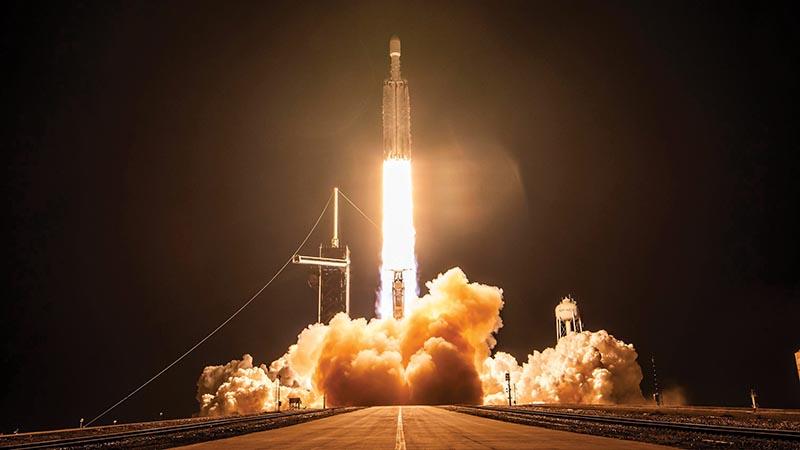See us at MRO Asia Pacific 2025
How The X-37B Is Shaping The Future Of The U.S. Space Force
Details
More Products & Services
Products & Services
Home - Aviation Group Marketing
Aviation Week Network
120 data points on over 156,000 commercial and business aviation aircraft, including military transports. Discover the most trustworthy resource for the complete aircraft history, plus ad hoc reports, month-over-month trend analysis and details on expected deliveries through 2050.
Aerospace | Aviation Week Network
Aviation Week Network
https://aviationweek.com/themes/custom/particle/dist/app-drupal/assets/awn-logo.svg
People

Andrea Rossi Prudente
Aviation Week Network

Anthony Lim
Aviation Week Network
Sales director

Becca Balmes
Aviation Week Network

Belinda Tan
Aviation Week Network

Brian Everstine
Aviation Week Network
Editor

Eddie Krankowski
Aviation Week Network
Assistant Manager, Tradeshows

erving dockery
Aviation Week Network

Lisa Tan
Aviation Week Network
Senior Marketing Manager

Mark Thomas
Aviation Week Network
Description
As the Pentagon explores how to fight future wars in space, it is leaning on a mysterious platform that has logged a record-setting number of years quietly operating in space. The X-37B Orbital Test Vehicle—a 29-ft.-long experimental spacecraft that can reenter the Earth's atmosphere autonomously—has emerged as a critical tool for the U.S. Space Force's future planning.
The real-world data collector is helping the five-year-old service learn how to operate in a domain that is increasingly crowded with small satellites and orbital debris from a widening net of state-owned and commercial assets.
“When I have a platform like the X-37B, my mouth starts to water,” Chief of Space Operations Gen. Chance Saltzman told Aviation Week in an exclusive interview Jan. 31. Saltzman faces critical decisions in the next couple of years about how best to equip the service to give the U.S. a military edge in the contested domain.The service is using the spaceplane's data to inform next-gen capability developmentA new automated system has tracked millions of collision avoidance opportunities
During the first six missions, the X-37B spent more than 3,774 days in orbit. It launched on its current mission, OTV-7, on Dec. 28, 2023, and passed 400 days in orbit on Jan. 31. By comparison, the space shuttle spent 1,323 days in space during NASA shuttle flights between April 1981 and July 2011.
The Boeing-built spacecraft is derived from NASA's original X-37 program, which ran from 1999 to 2004. It was then transferred to DARPA before being taken over by the Air Force Rapid Capabilities Office (RCO) in 2010. The spacecraft launches vertically atop a rocket but lands horizontally on a flight line, like an airplane.
Space observers openly speculate about the spacecraft's range of mission areas and technology, especially as the onboard payloads have remained largely undisclosed. The Air Force has long maintained that the platform is intended to demonstrate reliable, reusable spacecraft capabilities and support experiments that can be brought back to Earth.
Along with its reusability, the X-37B is more maneuverable and agile than most spacecraft, and on its longest mission to date it orbited nearly 2.5 years before returning to terra firma.
The Space Force is gathering data from both the onboard experiments inside the spacecraft and in an attached service module that was introduced on its sixth mission. An onboard camera captured the X-37B and Earth on its current mission, during which it also performed an aerobraking maneuver for the first time. Credit: U.S. Space Force
Saltzman said those findings will inform the service's path forward across a number of space-based mission areas and future satellite programs. “It allows me then to apply physics-based, real-world data as we look . . . to create more resilient architectures,” he said.
Since launching the first mission in 2010, the U.S. military has kept the X-37B's movements under wraps, waiting until the spacecraft has landed before announcing its return to Earth.
In a break from that pattern, the Space Force announced in October that the spaceplane would perform an aerobraking maneuver for the first time during its ongoing mission, performing radiation effect experiments and test space domain awareness technologies in a highly elliptical orbit (HEO).Read more: The X-37B Holds A Novel Place In Family Tree of Reusable Spacecraft
The X-37B was planned to use the drag of Earth's atmosphere to dip into low Earth orbit (LEO) long enough to dispose of its service module safely, then resume its testing and experimentation efforts in HEO.
The OTV-7 mission is the first on which the X-37B is operating in HEO rather than solely in LEO. Former Air Force Secretary Heather Wilson previously hinted at the spaceplane's ability to perform “an orbit that looks like an egg” and maneuver itself once it is close enough to the atmosphere.
That means adversaries would not know where it will reappear on orbit, Wilson told the audience at the 2019 Aspen Security Forum. “And we know that that drives them nuts, and I'm really glad about that,” she added.
The move to HEO has allowed the RCO and Space Force to observe the spaceplane's exposure to new orbital regimes. The upper range of LEO is 2,000 km (1,240 mi.), whereas the perigree of an elliptical HEO orbit is about 1,000 km, and the apogee is more than 35,786 km.
The aerobraking maneuver capability required modifications to the spaceplane, namely for fault protection, autonomy and collision avoidance. Boeing developed a new collision avoidance system ahead of OTV-7, said Michelle Parker, company vice president for space mission systems.
Autonomy is critical as space becomes more congested and the spaceplane operates in various regimes, Parker told Aviation Week at Boeing's satellite facilities in El Segundo, California, on Feb. 3.
Over the course of the X-37B's current mission, the Space Force identified about 1.7 million collision avoidance opportunities, Saltzman said, noting, “When we talk about data, I'm not talking about four or five numbers on a spreadsheet.”
The aerobraking maneuver has allowed Saltzman to evaluate the service's Space Surveillance Network, a global collective of optical and radar sensors that detect, track, identify and catalog all human-made objects on orbit. Through the experiment, he is able to observe how other such sensors are able to find and track the spaceplane's new orbit, he said.
Collecting such real-world data on orbital maneuvering is key for the Space Force to avoid operational surprise from peer adversaries.
The China Aerospace Science and Technology Corp. has developed its own experimental reusable spaceplane, known as the Shenlong. It has completed three missions, performing what observers have determined to be rendezvous and proximity operations and releasing small satellites or objects into orbit.
Beijing has maintained strict secrecy around the spacecraft, which is believed to be analogous to the X-37B. The two spaceplanes launched within two weeks of each other in December 2023. The Shenlong deorbited in September, but the X-37B is continuing its operations.
The Space Force has identified space domain awareness, resilient on-orbit architectures and “responsible” counterspace capabilities as its three main focus areas into its next five years, Saltzman said in December at the Space Force Association's Spacepower Conference in Orlando, Florida.
Saltzman said in the interview he has no plans to use the X-37B as an operational vehicle but will continue to use it to refine thinking about the potential capabilities and tactics of similar adversarial platforms and to design high-fidelity training environments.
As the service prepares for the possibility of a war in space, having an experimental platform has become “even more valuable than maybe it was when [space] was a benign environment,” he said.
The X-37B will be instrumental as the Space Force establishes its latest field command over the next year. Space Futures Command will help the service forecast the space threat environment, conduct wargaming and training, and develop and validate mission area design.
Once formally set up, the command will leverage data and findings from the X-37B's on-orbit activities in concert with the Air Force RCO, Saltzman said.
“The RCO will hear what Futures Command sees as challenges; they'll see what technologies they think might be interesting, and they'll see if the X-37 can collect data that informs gaps that they have in their knowledge or operational concepts,” he said.
The Space Force declined to share how data from the X-37B is informing future spacecraft design, as those discussions are early in the research-and-development phase, Saltzman noted. But he expects it could help evaluate the potential cost of servicing satellites on orbit rather than deorbiting them for depot-like refurbishment or a total platform refresh. “All of these options are available to us, but how much does it cost? Which one makes sense for which mission?” he said.
Saltzman demurred on when the spaceplane might return to Earth and when an eighth mission might begin. Historically, the next mission has launched within one year of its predecessor's return to Earth, except for the latest mission, which launched 13 months later.
Boeing has maintained the X-37B via continual upgrades, Parker said. The spaceplane is on its second generation of batteries and third generation of solar cells, supplied by Boeing subsidiary Spectrolab.
“Even though it may look the same, a lot of the innards have been upgraded and then can continue to fly for a significant amount of time,” Parker said.
That refurbishment has helped the X-37B team keep the program cost-effective, Saltzman and Parker both note, declining to share funding details.
While Parker emphasized that the X-37B is a government platform, she said that its attributes could one day be applied to commercial platforms to support on-orbit refueling and experimentation or debris collection.
“As the space industry and the space ecosystem expands, I think the opportunities for something that you can do on a returnable platform . . . expand as well,” she said.
The patent on the new automated collision avoidance system is pending, and Boeing says the system is not being incorporated into other platforms at this time.
Space Force leaders have endeavored to speak more bluntly about its mission areas and capabilities amid growing competition with China and Russia. When Saltzman was working as a Minuteman III launch officer and satellite operator for the National Reconnaissance Office, the U.S. military never described space as a warfighting domain, he said.
“It was static, to some degree, in the sense that our goal was to launch satellites to orbit that would last forever—if we could make it happen,” he said.
The service saw the benefit of inching back the curtain on the X-37B in October to disclose the planned series of aerobraking maneuvers, especially as safe maneuvering on orbit is critical for spaceflight operations, Saltzman said.
“We wanted to let everybody know that we were going to do it,” he said. “We want other nations to observe it. We want to share the data.”
About the X-37B
The X-37 was first known as the Future-X Pathfinder when NASA launched the effort to study more than 40 airframe, propulsion and operations technologies, seeking to lower the cost of access to space. The agency ran the program from 1999 until September 2004, when it was transferred to DARPA. NASA also performed low-speed and low-altitude tests in 1998-2001 using the X-40A, a subscale version of the X-37 developed by the Air Force Research Laboratory. DARPA then performed several captive-carry and drop tests of the Boeing-built X-37A in 2005-06, prompting the Air Force's announcement to begin the X-37B Orbital Test Vehicle program in November 2006.
To date, the X-37B has completed six missions, beginning with its first launch on a United Launch Alliance Atlas V 501 rocket on April 22, 2010, from Cape Canaveral SFS. A SpaceX Falcon Heavy rocket launched it on its current mission on Dec. 28, 2023, and it passed 400 days in orbit on Jan. 31.!function(e,n,i,s){var d="InfogramEmbeds";var o=e.getElementsByTagName(n)[0];if(window[d]&&window[d].initialized)window[d].process&&window[d].process();else if(!e.getElementById(i)){var r=e.createElement(n);r.async=1,r.id=i,r.src=s,o.parentNode.insertBefore(r,o)}}(document,"script","infogram-async","https://e.infogram.com/js/dist/embed-loader-min.js");!function(e,n,i,s){var d="InfogramEmbeds";var o=e.getElementsByTagName(n)[0];if(window[d]&&window[d].initialized)window[d].process&&window[d].process();else if(!e.getElementById(i)){var r=e.createElement(n);r.async=1,r.id=i,r.src=s,o.parentNode.insertBefore(r,o)}}(document,"script","infogram-async","https://e.infogram.com/js/dist/embed-loader-min.js");
The real-world data collector is helping the five-year-old service learn how to operate in a domain that is increasingly crowded with small satellites and orbital debris from a widening net of state-owned and commercial assets.
“When I have a platform like the X-37B, my mouth starts to water,” Chief of Space Operations Gen. Chance Saltzman told Aviation Week in an exclusive interview Jan. 31. Saltzman faces critical decisions in the next couple of years about how best to equip the service to give the U.S. a military edge in the contested domain.The service is using the spaceplane's data to inform next-gen capability developmentA new automated system has tracked millions of collision avoidance opportunities
During the first six missions, the X-37B spent more than 3,774 days in orbit. It launched on its current mission, OTV-7, on Dec. 28, 2023, and passed 400 days in orbit on Jan. 31. By comparison, the space shuttle spent 1,323 days in space during NASA shuttle flights between April 1981 and July 2011.
The Boeing-built spacecraft is derived from NASA's original X-37 program, which ran from 1999 to 2004. It was then transferred to DARPA before being taken over by the Air Force Rapid Capabilities Office (RCO) in 2010. The spacecraft launches vertically atop a rocket but lands horizontally on a flight line, like an airplane.
Space observers openly speculate about the spacecraft's range of mission areas and technology, especially as the onboard payloads have remained largely undisclosed. The Air Force has long maintained that the platform is intended to demonstrate reliable, reusable spacecraft capabilities and support experiments that can be brought back to Earth.
Along with its reusability, the X-37B is more maneuverable and agile than most spacecraft, and on its longest mission to date it orbited nearly 2.5 years before returning to terra firma.
The Space Force is gathering data from both the onboard experiments inside the spacecraft and in an attached service module that was introduced on its sixth mission. An onboard camera captured the X-37B and Earth on its current mission, during which it also performed an aerobraking maneuver for the first time. Credit: U.S. Space Force
Saltzman said those findings will inform the service's path forward across a number of space-based mission areas and future satellite programs. “It allows me then to apply physics-based, real-world data as we look . . . to create more resilient architectures,” he said.
Since launching the first mission in 2010, the U.S. military has kept the X-37B's movements under wraps, waiting until the spacecraft has landed before announcing its return to Earth.
In a break from that pattern, the Space Force announced in October that the spaceplane would perform an aerobraking maneuver for the first time during its ongoing mission, performing radiation effect experiments and test space domain awareness technologies in a highly elliptical orbit (HEO).Read more: The X-37B Holds A Novel Place In Family Tree of Reusable Spacecraft
The X-37B was planned to use the drag of Earth's atmosphere to dip into low Earth orbit (LEO) long enough to dispose of its service module safely, then resume its testing and experimentation efforts in HEO.
The OTV-7 mission is the first on which the X-37B is operating in HEO rather than solely in LEO. Former Air Force Secretary Heather Wilson previously hinted at the spaceplane's ability to perform “an orbit that looks like an egg” and maneuver itself once it is close enough to the atmosphere.
That means adversaries would not know where it will reappear on orbit, Wilson told the audience at the 2019 Aspen Security Forum. “And we know that that drives them nuts, and I'm really glad about that,” she added.
The move to HEO has allowed the RCO and Space Force to observe the spaceplane's exposure to new orbital regimes. The upper range of LEO is 2,000 km (1,240 mi.), whereas the perigree of an elliptical HEO orbit is about 1,000 km, and the apogee is more than 35,786 km.
The aerobraking maneuver capability required modifications to the spaceplane, namely for fault protection, autonomy and collision avoidance. Boeing developed a new collision avoidance system ahead of OTV-7, said Michelle Parker, company vice president for space mission systems.
Autonomy is critical as space becomes more congested and the spaceplane operates in various regimes, Parker told Aviation Week at Boeing's satellite facilities in El Segundo, California, on Feb. 3.
Over the course of the X-37B's current mission, the Space Force identified about 1.7 million collision avoidance opportunities, Saltzman said, noting, “When we talk about data, I'm not talking about four or five numbers on a spreadsheet.”
The aerobraking maneuver has allowed Saltzman to evaluate the service's Space Surveillance Network, a global collective of optical and radar sensors that detect, track, identify and catalog all human-made objects on orbit. Through the experiment, he is able to observe how other such sensors are able to find and track the spaceplane's new orbit, he said.
Collecting such real-world data on orbital maneuvering is key for the Space Force to avoid operational surprise from peer adversaries.
The China Aerospace Science and Technology Corp. has developed its own experimental reusable spaceplane, known as the Shenlong. It has completed three missions, performing what observers have determined to be rendezvous and proximity operations and releasing small satellites or objects into orbit.
Beijing has maintained strict secrecy around the spacecraft, which is believed to be analogous to the X-37B. The two spaceplanes launched within two weeks of each other in December 2023. The Shenlong deorbited in September, but the X-37B is continuing its operations.
The Space Force has identified space domain awareness, resilient on-orbit architectures and “responsible” counterspace capabilities as its three main focus areas into its next five years, Saltzman said in December at the Space Force Association's Spacepower Conference in Orlando, Florida.
Saltzman said in the interview he has no plans to use the X-37B as an operational vehicle but will continue to use it to refine thinking about the potential capabilities and tactics of similar adversarial platforms and to design high-fidelity training environments.
As the service prepares for the possibility of a war in space, having an experimental platform has become “even more valuable than maybe it was when [space] was a benign environment,” he said.
The X-37B will be instrumental as the Space Force establishes its latest field command over the next year. Space Futures Command will help the service forecast the space threat environment, conduct wargaming and training, and develop and validate mission area design.
Once formally set up, the command will leverage data and findings from the X-37B's on-orbit activities in concert with the Air Force RCO, Saltzman said.
“The RCO will hear what Futures Command sees as challenges; they'll see what technologies they think might be interesting, and they'll see if the X-37 can collect data that informs gaps that they have in their knowledge or operational concepts,” he said.
The Space Force declined to share how data from the X-37B is informing future spacecraft design, as those discussions are early in the research-and-development phase, Saltzman noted. But he expects it could help evaluate the potential cost of servicing satellites on orbit rather than deorbiting them for depot-like refurbishment or a total platform refresh. “All of these options are available to us, but how much does it cost? Which one makes sense for which mission?” he said.
Saltzman demurred on when the spaceplane might return to Earth and when an eighth mission might begin. Historically, the next mission has launched within one year of its predecessor's return to Earth, except for the latest mission, which launched 13 months later.
Boeing has maintained the X-37B via continual upgrades, Parker said. The spaceplane is on its second generation of batteries and third generation of solar cells, supplied by Boeing subsidiary Spectrolab.
“Even though it may look the same, a lot of the innards have been upgraded and then can continue to fly for a significant amount of time,” Parker said.
That refurbishment has helped the X-37B team keep the program cost-effective, Saltzman and Parker both note, declining to share funding details.
While Parker emphasized that the X-37B is a government platform, she said that its attributes could one day be applied to commercial platforms to support on-orbit refueling and experimentation or debris collection.
“As the space industry and the space ecosystem expands, I think the opportunities for something that you can do on a returnable platform . . . expand as well,” she said.
The patent on the new automated collision avoidance system is pending, and Boeing says the system is not being incorporated into other platforms at this time.
Space Force leaders have endeavored to speak more bluntly about its mission areas and capabilities amid growing competition with China and Russia. When Saltzman was working as a Minuteman III launch officer and satellite operator for the National Reconnaissance Office, the U.S. military never described space as a warfighting domain, he said.
“It was static, to some degree, in the sense that our goal was to launch satellites to orbit that would last forever—if we could make it happen,” he said.
The service saw the benefit of inching back the curtain on the X-37B in October to disclose the planned series of aerobraking maneuvers, especially as safe maneuvering on orbit is critical for spaceflight operations, Saltzman said.
“We wanted to let everybody know that we were going to do it,” he said. “We want other nations to observe it. We want to share the data.”
About the X-37B
The X-37 was first known as the Future-X Pathfinder when NASA launched the effort to study more than 40 airframe, propulsion and operations technologies, seeking to lower the cost of access to space. The agency ran the program from 1999 until September 2004, when it was transferred to DARPA. NASA also performed low-speed and low-altitude tests in 1998-2001 using the X-40A, a subscale version of the X-37 developed by the Air Force Research Laboratory. DARPA then performed several captive-carry and drop tests of the Boeing-built X-37A in 2005-06, prompting the Air Force's announcement to begin the X-37B Orbital Test Vehicle program in November 2006.
To date, the X-37B has completed six missions, beginning with its first launch on a United Launch Alliance Atlas V 501 rocket on April 22, 2010, from Cape Canaveral SFS. A SpaceX Falcon Heavy rocket launched it on its current mission on Dec. 28, 2023, and it passed 400 days in orbit on Jan. 31.!function(e,n,i,s){var d="InfogramEmbeds";var o=e.getElementsByTagName(n)[0];if(window[d]&&window[d].initialized)window[d].process&&window[d].process();else if(!e.getElementById(i)){var r=e.createElement(n);r.async=1,r.id=i,r.src=s,o.parentNode.insertBefore(r,o)}}(document,"script","infogram-async","https://e.infogram.com/js/dist/embed-loader-min.js");!function(e,n,i,s){var d="InfogramEmbeds";var o=e.getElementsByTagName(n)[0];if(window[d]&&window[d].initialized)window[d].process&&window[d].process();else if(!e.getElementById(i)){var r=e.createElement(n);r.async=1,r.id=i,r.src=s,o.parentNode.insertBefore(r,o)}}(document,"script","infogram-async","https://e.infogram.com/js/dist/embed-loader-min.js");

Share
Recent Chats
Share via email
Future: handle WhatsApp here
Future: handle LinkedIn here
Future: handle Twitter here
SUBMENU HERE
Share via Chat
Copy Link

